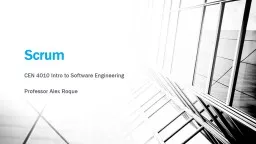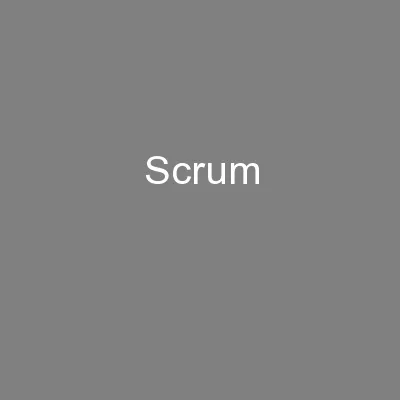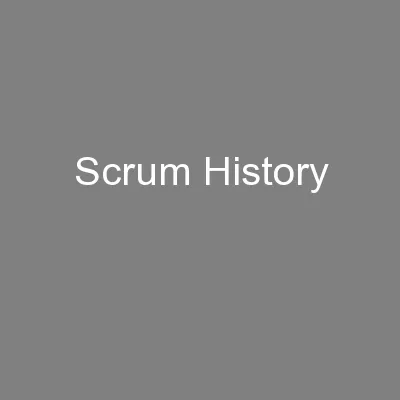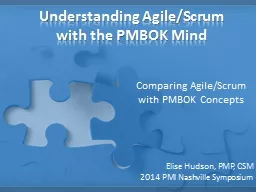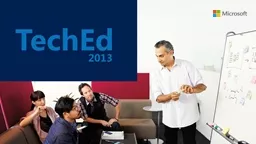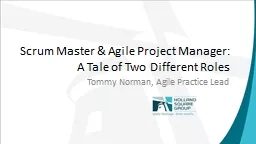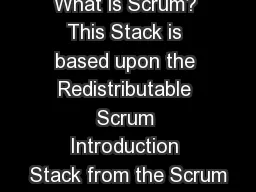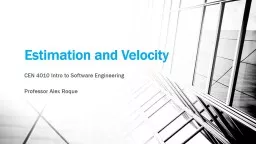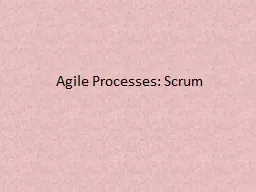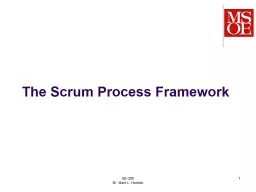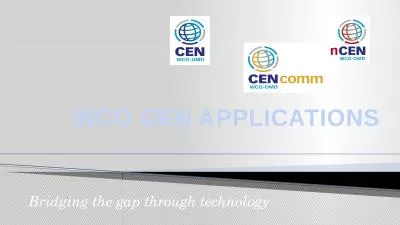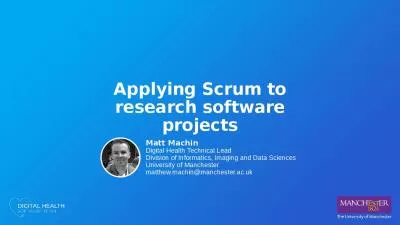PPT-Scrum CEN 4010 Intro to Software Engineering
Author : ellena-manuel | Published Date : 2018-02-25
Professor Alex Roque What is scrum Scrum 101 Scrum is an agile approach for developing innovative products and services With an agile approach you begin by creating
Presentation Embed Code
Download Presentation
Download Presentation The PPT/PDF document "Scrum CEN 4010 Intro to Software Enginee..." is the property of its rightful owner. Permission is granted to download and print the materials on this website for personal, non-commercial use only, and to display it on your personal computer provided you do not modify the materials and that you retain all copyright notices contained in the materials. By downloading content from our website, you accept the terms of this agreement.
Scrum CEN 4010 Intro to Software Engineering: Transcript
Download Rules Of Document
"Scrum CEN 4010 Intro to Software Engineering"The content belongs to its owner. You may download and print it for personal use, without modification, and keep all copyright notices. By downloading, you agree to these terms.
Related Documents

